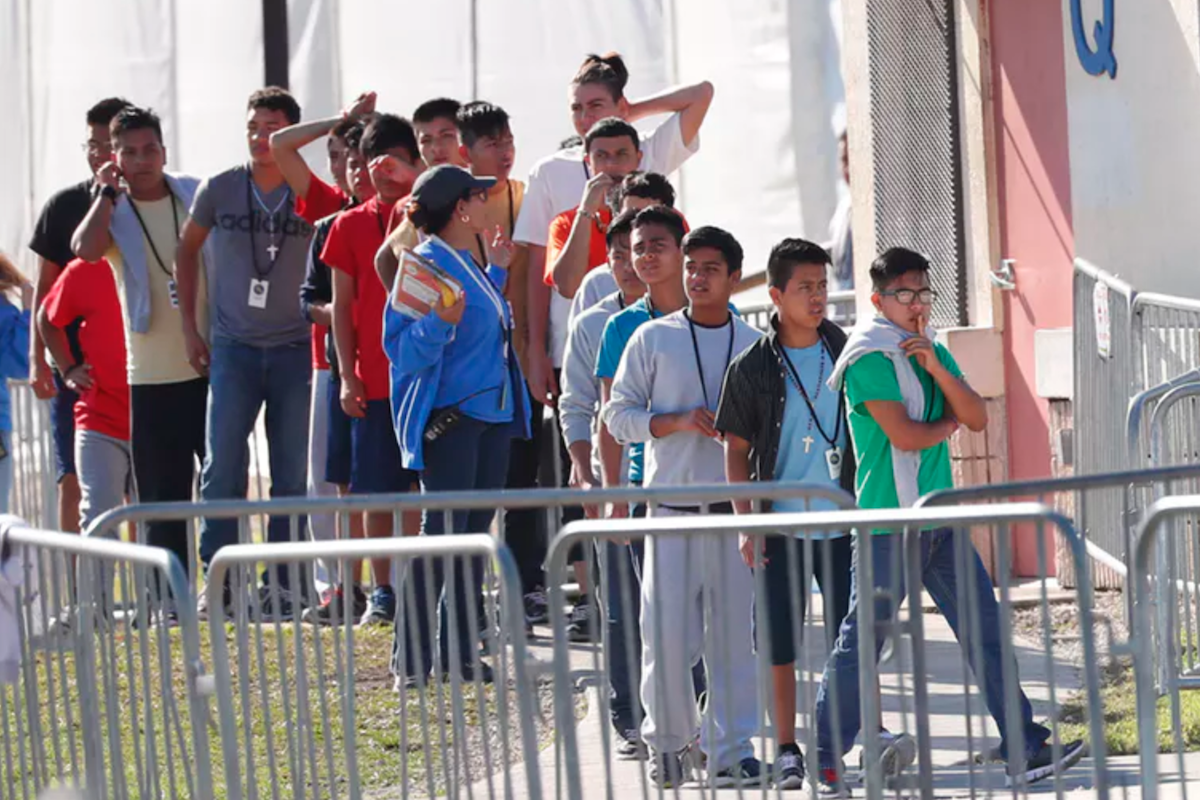

By Cassandra Burke Robertson, Case Western Reserve University and Irina D. Manta, Hofstra University
We are law professors who have studied civil litigation involving citizenship disputes and thousands of cases involving citizens caught up in immigration cases.
That includes the U.S. citizens who have been accidentally swept up in the government’s immigration enforcement efforts since the mid-19th century. In many cases, they have been detained and even deported.
In fact, more than 1,500 U.S. citizens spent time in immigration detention between 2007 and 2015 before the government acknowledged the mistake, federal records indicate. Northwestern University political scientist Jacqueline Stevens estimated that approximately 1% of all immigration detainees from more than 8,000 cases between 2006 and 2008 that she studied were U.S. citizens.
Chinese Exclusion Act
Following its founding and for more than a century, the United States allowed foreigners to voluntarily settle here. The Chinese Exclusion Act in 1882, the first of several measures designed to restrict immigration from China, limited immigration for the first time.
The Supreme Court made it clear in 1920 with a ruling related to those curbs on Chinese immigrants that it is illegal for immigration authorities to deliberately detain or deport U.S. citizens. The case resolved a dispute between Kwock Jan Fat, a man born in California who was denied permission to return to the United States after a trip to China, and the immigration authorities.
The unanimous ruling included a warning about the risks of accidentally deporting citizens. “It is better that many Chinese immigrants should be improperly admitted than that one natural born citizen of the United States should be permanently excluded from his country,” Justice John Hessin Clarke wrote in the court’s opinion.
More than 75 years after the Chinese Exclusion Act’s repeal in 1943, we believe that the court’s concerns about protecting the rights of U.S. citizens during immigration enforcement actions remain relevant.
Scholars like Francisco Balderrama of California State University in Los Angeles and Kelly Lytle-Hernandez at University of California, Los Angeles have researched what happened when hundreds of thousands of people of Mexican descent were rounded up and forced onto trains bound for Mexico during the mass deportations of the Great Depression and the 1950s. They have determined that many of the people expelled from this country were actually U.S.-born citizens.
Hard to Count
More recent examples abound of the U.S. government detaining citizens after falsely accusing them of breaking immigration laws.
Immigration and Customs Enforcement authorities reportedly detained for three days Jilmar Ramos-Gomez, a veteran born in Grand Rapids, Michigan who served with the Marines in Afghanistan, in 2018 because the agency did not believe he was born here.
ICE also detained for more than three weeks a man named Peter Brown who was born in Philadelphia and lived in the Florida Keys in 2018 because the agency confused him with an undocumented Jamaican immigrant—who was also named Peter Brown.
In 2007, the government settled a lawsuit arising from ICE’s detention of 6-year-old Kebin Reyes. ICE detained the California-born child for 10 hours when it picked up his undocumented father, even though his father immediately handed the authorities Reyes’ U.S. passport to prove the boy’s citizenship.
And Justice Department records obtained by the Los Angeles Times indicate that a 10-year-old boy from San Francisco was mistakenly held in immigration detention in Texas for two months, according to his lawyer.
Citizen Misclassification
The Department of Homeland Security’s internal watchdog has released a report detailing “dangerous overcrowding” and “prolonged detention” in immigration detention facilities.
The Inspector General’s report details several ways in which the detention facilities violate federal laws. For example, the law requires the government to move people out of border-control facilities within 72 hours. But 3,400 detainees were held for longer. Some adults stayed in standing-room-only conditions for up to a week.
There is no guarantee that U.S. citizens, including children, are not included among the detainees enduring those conditions. That’s because studies have shown that children are particularly vulnerable to being wrongly subjected to immigration enforcement actions for two main reasons.
First, many adults who are detained and deported have children who are U.S. citizens.
Second, families of children born outside the United States —especially those born out of wedlock— may not even realize that their child is a U.S. citizen because the rules are complex. They vary according to year of birth, the amount of time the parents spent in the United States and the marital status of the parents. Having a grandparent who became a naturalized citizen could mean that a child born outside the U.S. also acquired citizenship at birth.
Violating Rights
Even when someone knows their own citizenship status, it can be difficult to prove. Federal regulations require government officials to “carefully and expeditiously investigate and analyze the potential U.S. citizenship of individuals encountered by ICE.”
Proving citizenship can require collecting a significant number of records, including birth certificates from multiple generations, records of parents’ prior residence in the United States and affidavits from people who can confirm that information.
Even so, detaining and deporting citizens violates the constitutional right all Americans have to not be subjected to unreasonable searches and seizures under the Fourth Amendment.
This article is republished from The Conversation under a Creative Commons license. Read the original article.


